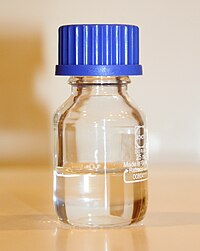
Photo from wikipedia
Pyrrole derivatives are nitrogen-containing heterocyclic compounds and widely distributed in a large number of natural and non-natural compounds. These compounds possess a broad spectrum of biological activities such as anti-infammatory,… Click to show full abstract
Pyrrole derivatives are nitrogen-containing heterocyclic compounds and widely distributed in a large number of natural and non-natural compounds. These compounds possess a broad spectrum of biological activities such as anti-infammatory, antiviral, antitumor, antifungal, and antibacterial activities. Besides their biological activity, pyrrole derivatives have also been applied in various areas such as dyes, conducting polymers, organic semiconductors. Due to such a wide range of applicability, access to this class of compounds has attracted intensive research interest. Various established synthetic methods such as Paal-Knorr, Huisgen, and Hantzsch have been modified and improved. In addition, numerous novel methods for pyrrole synthesis have been discovered. This review will focus on considerable studies on the synthesis of pyrroles, which date back from 2014.
Journal Title: Current Organic Chemistry
Year Published: 2020
Link to full text (if available)
Share on Social Media: Sign Up to like & get
recommendations!